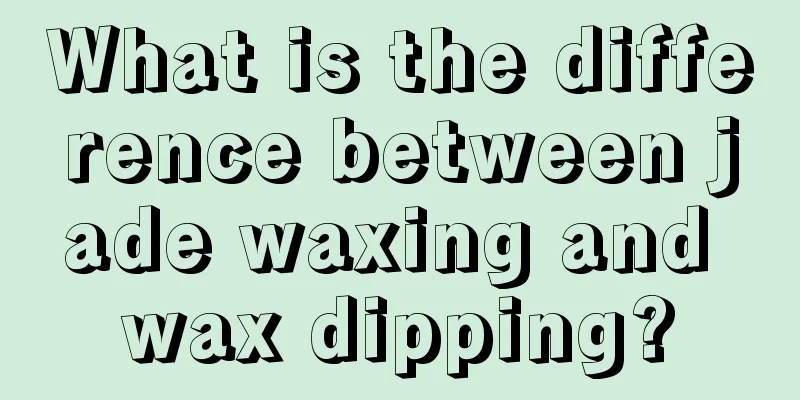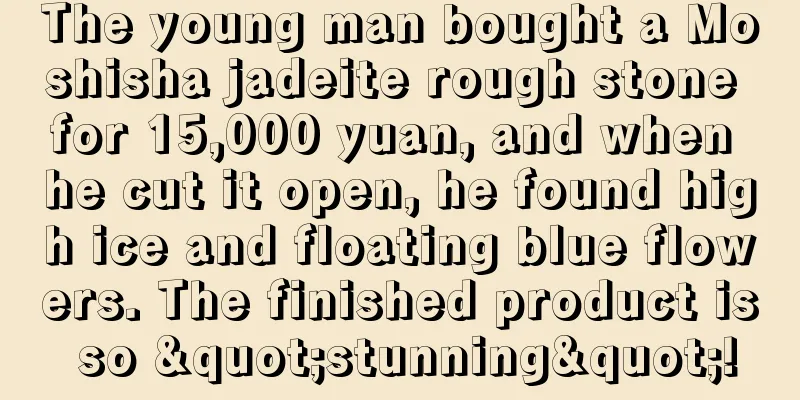What is the difference between jade waxing and wax dipping?

|
After jade is processed into finished products, the last step is to wax the jade, so most of the jade products on the market now are waxed. After wearing it for a period of time, the plant wax on the jade will slowly evaporate. The raw materials of this wax are natural plants, so it is harmless to the human body. Waxing is also one of the traditional Chinese folk crafts. The purpose of waxing is to make the surface of the finished jade product smooth and shiny, with beautiful and uniform luster. Carvers also melt vegetable wax and apply it to the tiny pits or cracks on the surface of the jade after polishing to fill the unevenness and make the surface of the jade smoother. It can also protect jade from external oil stains. Jade waxing is recognized in the jade industry and national jewelry standards, and it falls under the category of jade surface optimization. Waxing can better protect jade. After all, jade is a product of nature, and it is impossible for every piece to be flawless. After waxing, the wax can cover the pits on the surface of the jade, making the surface of the finished jade clean, smooth, lustrous and transparent. In addition to preventing the entry of oil stains, waxing also has another purpose, which is to give jade a protective layer to prevent the moisture inside the jade from being easily lost. It's like a girl putting on sunscreen before going out. Plant wax is non-toxic and harmless, so as long as the jade is polished, it will generally be waxed. So please don’t try to remove the wax from jade . Jade without wax is like having no protective layer and is more vulnerable to damage. Here, I would also like to share with you some knowledge about wax dipping. Common processes for optimizing jade appearance include waxing and wax dipping. The so-called waxing is what was mentioned above. Use the residual heat on the surface of the jade after polishing to apply paraffin wax on the surface of the jade, use the residual heat to melt the wax, and then wipe off the excess wax with a soft towel or cotton cloth. Jade that has been waxed will have a better gloss, feel smoother to the touch, and its transparency will also be improved to a certain extent. Wax dipping is not just about optimizing the surface of jade, it is also an "optimization" of both the inside and the outside. Wax dipping is to boil the polished jade in melted paraffin wax. The thermal expansion and contraction will enlarge the cracks inside and outside the jade, and the melted paraffin wax will "take advantage of the opportunity" and enter the interior of the jade. This method not only optimizes the surface, but also fills the pores inside the jade with paraffin. This optimization method is very similar to B and C goods, so wax dipping changes not only the appearance of jade, but also the quality of jade. This method is generally used on jadeite that has a soft texture, loose structure and little intrinsic value. For jadeite with good water quality, wax dipping is useless and may even have the opposite effect. Wax dipping fundamentally changes the quality of jade, which will cause the structure of jade to be unstable, and is an over-processing. Jadeite that has been treated with wax can be classified as B-grade or C-grade jadeite. Everyone should try not to buy this type of product. The above is the knowledge about jade wax. When buying jadeite, in addition to choosing a reliable merchant, you must also remember to ask for an appraisal certificate. No matter how sophisticated the counterfeiting methods are, they cannot be hidden from technology. Therefore, if you do not have much experience in identifying jadeite, checking the certificate is the most convenient and best method. fruit fcpf99 feicuibbs1 fcgc60 |
<<: How to better judge the value of a piece of jade?
>>: How to identify the color of jadeite?
Recommend
On a whim, a young man spent 3,000 yuan to buy jadeite rough stone online, but with one cut, it turned out to be "black chicken type"?
Originally, black was considered a dirty color fo...
Comparison photos of grade A and grade B jadeite. How to identify grade A jadeite?
It is a consensus among every consumer that when ...
Jade is a woman's lover in her life, you can only encounter it, you can't force it
If jade is given life, it feels more and more lik...
From an inconspicuous jadeite raw stone, you can cut into yellow and green jadeite, a tri-color jade that is priceless!
Why did yellow and green become the darling of th...
I spent 700,000 yuan to buy a jade ornament in Myanmar. When I returned home, I was shocked and couldn't tell the difference.
At first glance, this is an ice purple jade Buddh...
Wasn’t jadeite called jadeite before?
I believe that everyone is very familiar with jad...
The jade carver tells you what kind of jade material is suitable for making landscape pendants!
There are tens of millions of jade carving themes...
A piece of jade bracelet core with floating flowers, the jade carver skillfully transformed it into "Qin Shi Huang"!
When we make a bracelet out of a piece of raw sto...
I didn’t expect that an inconspicuous piece of jade could be so beautiful after being carved!
Jade has innate natural beauty, and a good jade c...
Is the round jade landscape plaque better or the square jade landscape plaque?
This is a subjective question, as the beauty of j...
Jade Secrets: Must-read Knowledge for Jade Investment Beginners
Jade is a popular investment product nowadays. Ma...
Why does jade jewelry change color after wearing for a long time?
If your jade changes color after wearing it for a...
Jadeite, the representative of jade culture
The Chinese nation is a jade-loving nation with a...
A piece of ordinary jadeite raw stone can be as good as the top-quality jadeite works after carving!
Today I’d like to share with you a piece of water...
What are the detailed steps in jade processing? How complicated is it to make jade into jewelry?
Material selection is the first step in jade proc...









